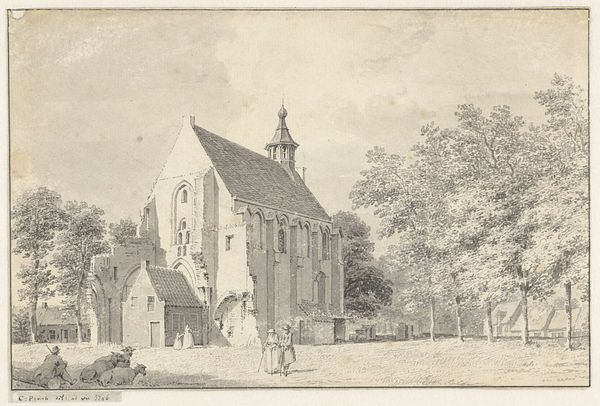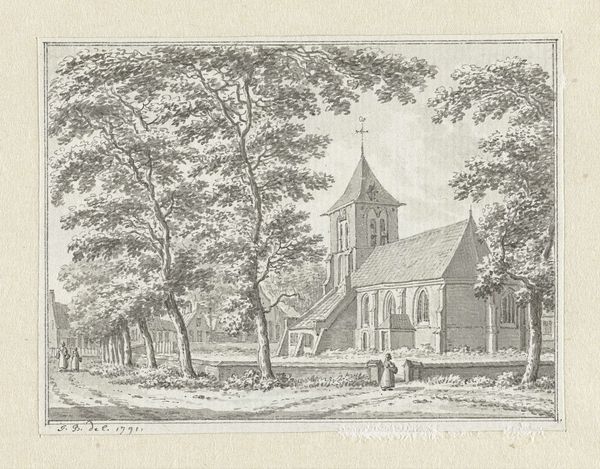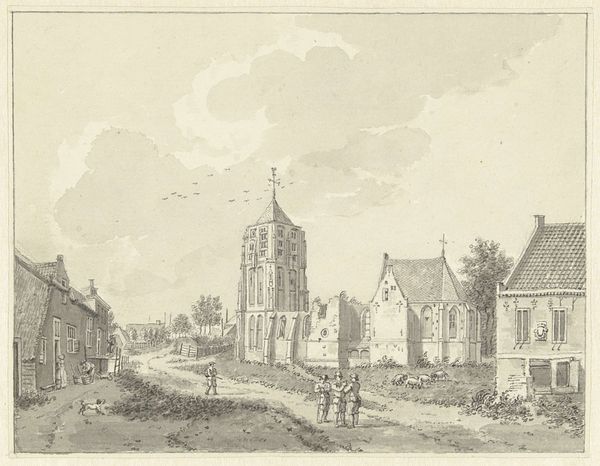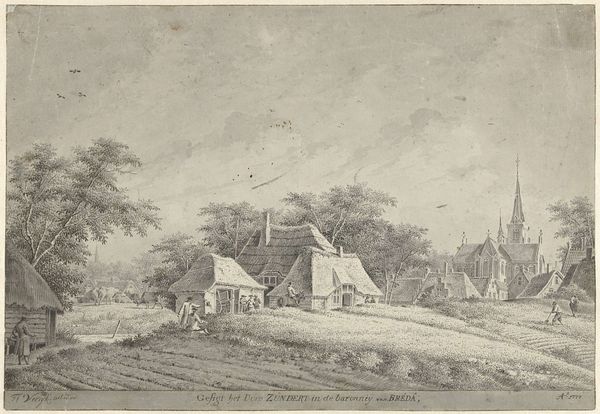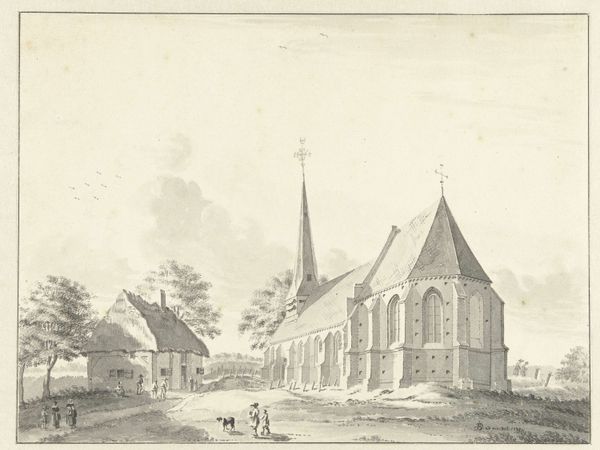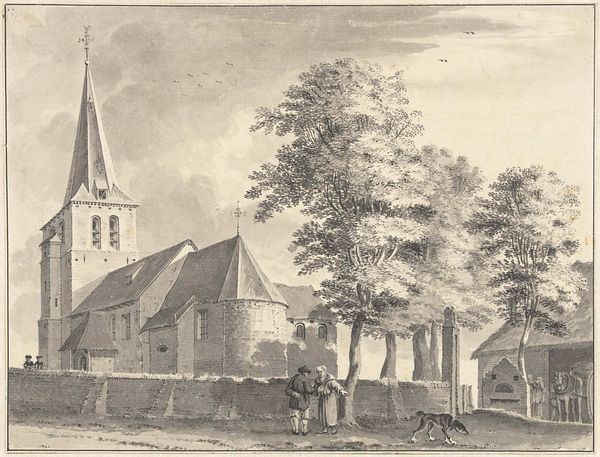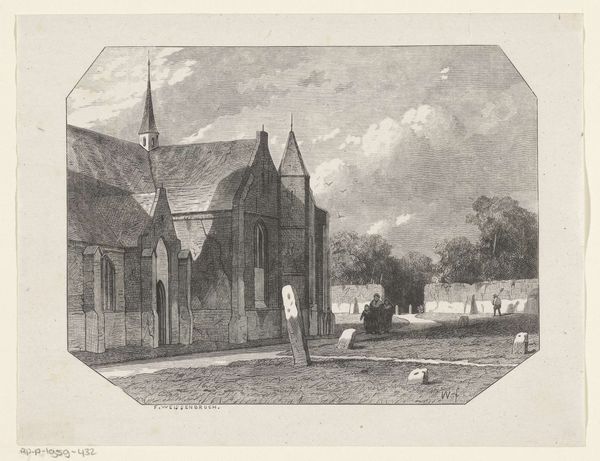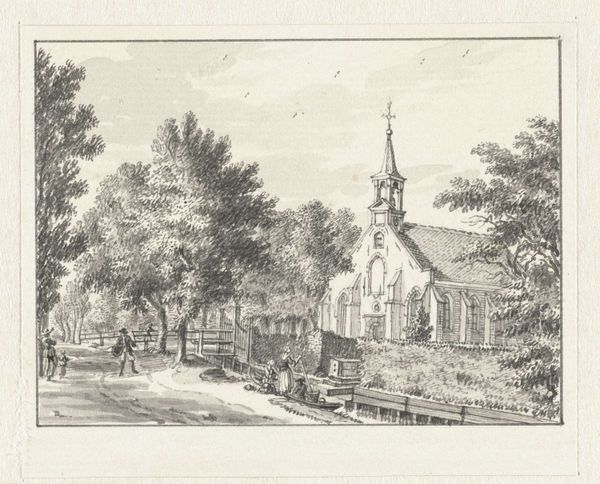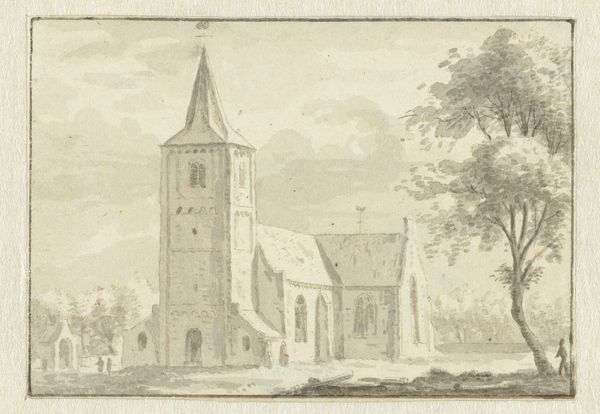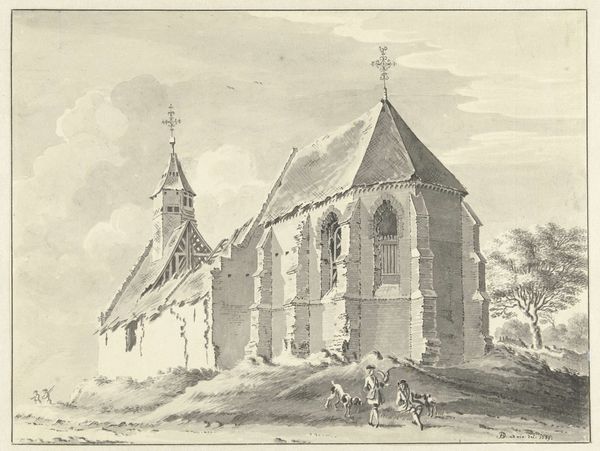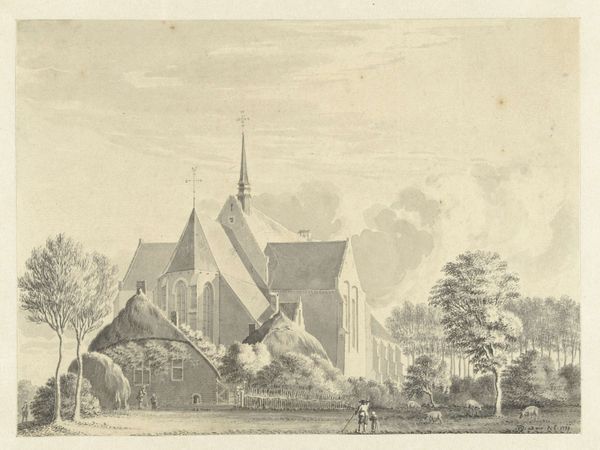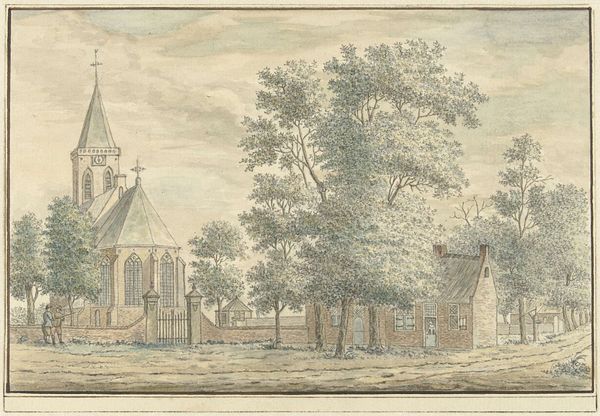
drawing, pencil
#
drawing
#
dutch-golden-age
#
landscape
#
pencil drawing
#
pencil
#
history-painting
#
realism
Dimensions: height 237 mm, width 377 mm
Copyright: Rijks Museum: Open Domain
Curator: It strikes me immediately how still it is; there’s a peaceful solemnity to this rendering of a village church, like time has stopped. Editor: That's an interesting reading. We’re looking at "A Village Church," a pencil drawing by Simon de Vlieger, made sometime between 1610 and 1653. It exemplifies Dutch Golden Age landscape drawing. What specifically evokes that stillness for you? Curator: The pencil strokes themselves are very controlled and delicate, not rushed. There’s also the subject. Churches during that period often represented stability and faith, both challenged during times of significant social upheaval. Even the crumbling edges hint at resilience, a kind of quiet strength against entropy. Editor: Indeed. Think about the paper and pencils available to de Vlieger at that time. High-quality drawing paper required specialized production methods and access to linen rags; the pencils were crafted carefully from specific graphite sources. This access speaks to the artist's position in a burgeoning mercantile society. Curator: Absolutely. And the level of detail achieved with such rudimentary tools! Notice the textures—the rough stone, the delicate foliage, even the cloudy sky implied through subtle shading. De Vlieger truly highlights his skill in representing the natural and built environment. But I wonder about his intent, too; why focus on what appears to be a dilapidated building? Editor: Well, the ruin, then and now, served as a memento mori, prompting reflection on the passage of time and the ephemeral nature of human achievement. I think in the context of the Dutch Republic's struggle for independence, these decaying structures carried powerful symbolic weight. They spoke to perseverance, community and possibly unspoken resistance, a silent dialogue against domination. Curator: I like the reading of a quiet community narrative embedded here, almost like a witness to the historical context it occupies. Thinking about the work involved in constructing such a large building in the first place is profound. It’s like an unsung monument to labor. Editor: Precisely. Looking at the remnants forces us to reckon with the structures of power and social change reflected in the church's architectural decline, but simultaneously in its hopeful endurance in de Vlieger's artistic gesture. Curator: I agree. I’ll certainly consider this a bit differently now—a portrait of a place holding silent histories. Editor: Yes, and the drawing itself prompts further research into de Vlieger's source materials and his possible societal position through his craft and technical skill. It shows us, truly, what a humble pencil can communicate.
Comments
No comments
Be the first to comment and join the conversation on the ultimate creative platform.
